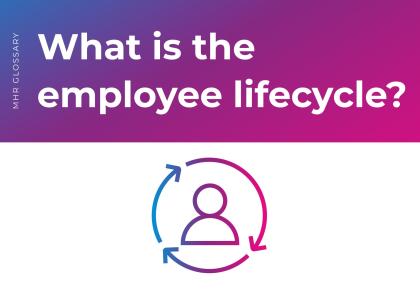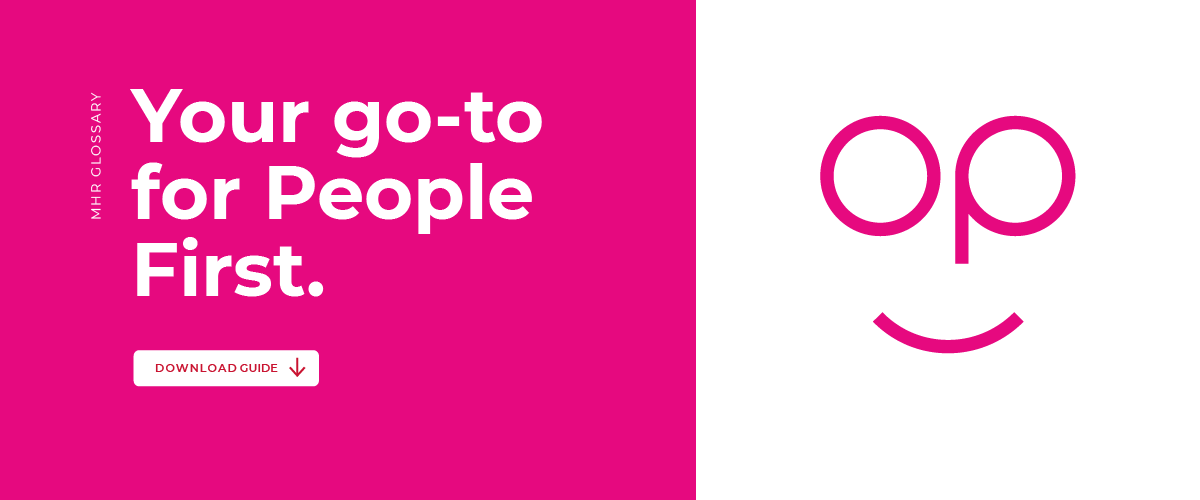Defining the employee lifecycle
In most models, there are six key employee lifecycle stages. Each one follows along in order with very little chance of varying. You won’t onboard someone before you’ve recruited them, for instance.
- Attract
- Recruit
- Onboard
- Retention
- Development
- Exit
Let’s unpack each one in more detail.
Attract
What’s the first thing people hear about when they learn about your organisation? Your employer brand is often your first point of contact with potential new hires, but it’s often an underrated part of the HR lifecycle.
What kinds of benefits do you offer? What reputation do you have locally as an employer? Do you take the time to put your company out there as an employer?
If you’re struggling to fill roles, it may be worth looking at your benefits offerings, and which recruitment channels you’re using.
Recruit
This is the most well-known phase of the employee lifecycle, which means it tends to get the most attention. However, some key parts of it are often neglected. While you won’t hire the vast majority of people who reach your recruitment phase, they still need to come away having had a good experience. This will strongly feed into your employer branding.
No matter what phase of recruitment you’re dealing with, trying to stay communicative, respectful and timely is vital.
Onboard
You can’t realistically expect a new hire to know all this ins and outs of your company the moment they arrive. Onboarding is how you’ll get them up to speed on the nuances of their role and how your company works. You can use a buddy system, personalised welcome days and a clear training plan to support this.
To find out more about how onboarding works, check out our complete glossary page.
Retention
Once your employee is working with you, some employers take a step back and start neglecting employee life cycle management. This can lead to hires becoming disengaged with the company, and feeling like the grass is greener elsewhere. Offering employees more flexibility, growth opportunities and a strong sense of purpose will help retain them.
Development
Without opportunities for growth, employees will start to leave. Development is where you’ll build out talent management strategies that put your employees first and gives them a clear action plan to grow their careers.
Exit
Occasionally referred to as ‘separation’, this is the process your employee goes through when they leave your organisation. In some cases, this will be as a result of retirement, but realistically this will more often be someone finding a new job.
Always take the time to have an exit interview. An employee will almost never be more candid with you than they are in these conditions, as the fear of reprisal is almost entirely gone. The feedback they give will be incredibly powerful.
There will be some cases where someone leaves under more hostile conditions. You need a strategy to deal with those situations just as much as you do the more positive exits.
Why does the employee lifecycle matter?
Why should HR leaders care about any of this? Employees join a company, they stay for a while, then they leave. That’s just a natural process. How much control can we really have over that?
While that may be true to an extent, finding ways to manage and refine the employee life cycle is hugely beneficial for an organisation. It can help lower staff turnover to a manageable level, increase the years of service each employee gives, reduce costs, and ensure you find the best talent that will give you a leg up over your competitors.
Measuring success in the employee lifecycle
Now you know what the employee lifecycle is and what it matters. How do you know your efforts to improve it are working? There are a number of useful KPIs you could make a point to track.
- Lower turnover costs
- Reduced churn rates
- More positive exit interviews
Current trends in employee lifecycle management
How we manage the employee life cycle should always shift a little to account for new best practices. At the moment, current trends point to a more holistic approach. While we’ve split each section of the HR life cycle into six stages for ease of understanding, it may be more helpful to picture it as a seamless journey with no stoppages. Positive experiences need to be baked into every moment of a candidate’s lifecycle.
Optimising the employee lifecycle
Regardless of anything else, you need to approach the employee life cycle stages with a strategic mindset. That will typically fall into three key stages.
Set out objectives
Without objectives, you’re inevitably going to be flying blind. Setting out clear expectations makes picking measurable KPIs a lot easier, which will help guide the other parts of your strategy.
You’ll also want to make sure your strategy accounts for the unique needs of your organisation. A thorough analysis of where things currently stand that identifies any major gaps is absolutely critical.
You might have some elements of your industry that other businesses don’t need to consider. For example, transport and logistics firms have many highly mobile employees, who’s life cycle will look wildly different from a traditional in-office employee. Taking the time to figure out and account for these differences will ensure your plan is as robust as possible.
Leverage technology
Thinking about managing all of these elements by hand should rightfully cause a panic for any HR leader. Luckily, HR technology has advanced to a state that ensures the employee lifecycle can form a natural part of your thinking.
For example, sentiment analysis can help you unpack how a selection of employees really feel at a glance. Talent management software can refine key processes and ensure they go as smoothly as possible. All of this frees up key HR personal to focus on more valuable strategising instead of getting caught up in a cycle of gathering and cleaning data and managing admin functions.
Gather feedback and evaluate
Once you have your strategy and you’ve started implementing it, you need to periodically check in on how things are going. You’ll never land on a one size fits all approach straight out of the gate. Adjustments are needed to keep things working well. Take a look at those KPIs you’ve set out in step one. Which do you meet, and which did you miss?
Gather feedback from employees to get a clearer picture of how things are going. The easiest will be those leaving the organisation through an exit interview, but surveys and check-ins are also tools in your arsenal. Plus, when you action the feedback employees give you, you’ll help them feel a lot more appreciated.
Final thoughts
From the moment a potential new employee hears about you, they’re part of your employee life cycle. Making sure this cycle is positive at every single stage will lead to a happier, healthier company. That means even when people leave, they’ll be doing so with a positive story about you, boosting your employer brand and making you a place people aren’t just happy to work, but they’re proud to work at.




